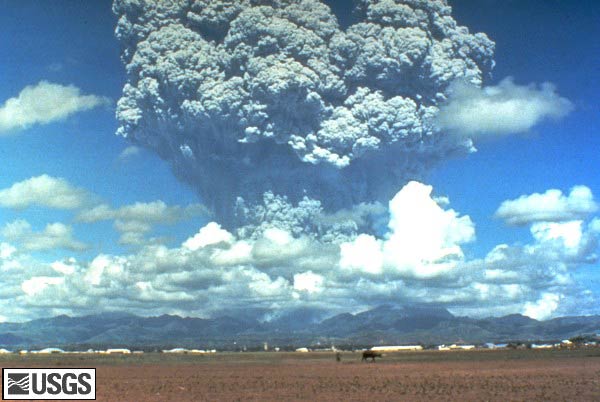Ancient Supervolcano Created Giant Underwater Mountain Chain

A supervolcano on the ocean floor might have spewed massive amounts of lava in a rapid amount of time, new findings that could help reveal the mysterious origin of some of these ancient goliaths, which may have triggered mass extinctions through Earth's history.
Roughly a dozen supervolcanoes currently exist. Some are on land, while others lie at the bottom of the ocean. Each has produced several million cubic miles of lava — about three hundred times the volume of all the Great Lakes combined — dwarfing the amount of lava produced by the Hawaiian volcanoes or the Icelandic volcano that erupted recently.
These eruptions have dramatically shaped life on Earth, pumping huge amounts of ash, dust and gas into the atmosphere that have killed off species and altered global climate. Despite their global impact, the cause of the massive eruptions from supervolcanoes at times remains unknown.
Magma mystery
The mystery lies in the origin of their magma, or molten rock within the Earth. Magma rising from deep within the Earth has a different isotopic and chemical composition than magma that forms just below Earth's crust. Some ocean supervolcanoes, known as large oceanic plateaus, show signs of a deep-mantle origin, while others possess chemical signatures of magma from a much shallower depth.
To help solve this mystery, scientists went on an ocean expedition to drill into a large, 145-million-year-old underwater supervolcano. Located 930 miles (1,500 kilometers) east off the coast of Japan, the Shatsky Rise volcanic mountain chain is one of the largest supervolcanoes in the world, measuring roughly the size of California. Its top lies about two miles (3.5 kilometers) below the sea's surface, while its base plunges to nearly four miles (six kilometers) beneath the surface.
Shatsky Rise formed at the intersection of three tectonic plates, known as a triple junction, where the crust is thin, with magma coming from near the surface. However, it also bears signs that it might have originated from a "plume head" of magma rising from deep within the Earth to the surface.
Get the world’s most fascinating discoveries delivered straight to your inbox.
"Shatsky Rise is one of the best places in the world to study the origin of supervolcanoes," said marine geologist and oceanographer William Sager of Texas A&M University, who led the expedition with co-chief scientist Takashi Sano of Japan's National Museum of Nature and Science.
Layer in time
They found Shatsky Rise is made up of layers of hardened lava, with individual lava flows up to 75 feet thick (23 meters). Preliminary results from their expedition suggest the supervolcano might have erupted over a period of a few million years or less — a rapid pace in geologic time.
"If you have an eruption that melts a large area rapidly like that, it would seem to me to favor of plume head theory that a blob of magma from near the core-mantle boundary ewlled upward," Sager told LiveScience.
Critical to these results are magnetic stripe patterns in the seafloor.
"What makes Shatsky Rise unique is that it's the only supervolcano to have formed during a time when Earth's magnetic field reversed frequently," Sager explained.
Evidence of these reversals in Earth's magnetic field, which happened periodically over hundreds of thousands of years, were captured by magnetically sensitive minerals in the lava, which preserved the way the Earth's magnetic poles once pointed much like compasses.
"We can use these magnetic stripes to decipher the timing of the eruption," Sager said. Initial shipboard lab studies showed that much of the lava erupted rapidly.
These findings could shed light on ancient massive lava flows, such as the Deccan Traps that erupted near the mass extinction that ended the age of dinosaurs, or the Siberian Traps that occurred right near the largest mass extinction in history at the Permian-Triassic boundary.
"These findings could shed light on the origins of supervolcanoes whose timing seem to have curious links with mass extinctions," Sager said.
- 101 Amazing Earth Facts
- Violent Planet: The Forces that Shape Earth
- Volcano Image Gallery



